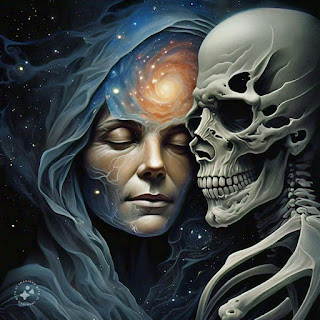Compare Keats' "The Terror of Death" to other Romantic poems. How does Keats' treatment of themes like nature, mortality, and the imagination compare to other Romantic poets? 10 marks
In John Keats's sonnet "When I Have Fears that I May Cease to Be," also known as "The Terror of Death," the poet grapples with themes of nature, mortality, and imagination, which are central to Romantic poetry. Keats's treatment of these themes shares similarities with other Romantic poets like William Wordsworth, Samuel Taylor Coleridge, and Percy Bysshe Shelley, while also displaying unique characteristics that set his work apart.
Nature:
Keats’s use of nature in "The Terror of Death" is evident in the imagery of the "night's starr'd face" and the "huge cloudy symbols of a high romance." Here, nature is depicted as a vast, mysterious force, inspiring both awe and creative ambition. This portrayal aligns with the Romantic tradition of revering nature as a source of beauty, inspiration, and spiritual insight. However, unlike Wordsworth, who often finds solace and moral guidance in nature, Keats’s depiction carries a sense of melancholy and unattainability. For instance, while Wordsworth in "Tintern Abbey" expresses confidence in nature's ability to restore and guide the soul, Keats reflects on the fear that he may never fully "trace / Their shadows, with the magic hand of chance." This underscores Keats's anxiety about the fleeting nature of life and the potential unfulfillment of his creative desires.
Mortality:
Mortality is a pervasive theme in Keats's poetry, and "The Terror of Death" is no exception. The poem's opening lines, "When I have fears that I may cease to be / Before my pen has glean'd my teeming brain," reveal Keats's acute awareness of his mortality and the possibility of dying before he can achieve his artistic potential. This concern with death is common among Romantic poets, yet Keats's approach is often more personal and immediate. In contrast, Shelley’s "Ozymandias" reflects on mortality through the lens of history, illustrating the inevitable decay of human achievements over time. Shelley's meditation on the impermanence of power and legacy parallels Keats's fear of dying before leaving a meaningful legacy, yet Keats's focus is more introspective, emphasizing the personal loss of unfulfilled potential.
Imagination:
Imagination plays a central role in Romantic poetry, often depicted as a powerful force that allows poets to transcend the limitations of reality. In "The Terror of Death," Keats's imagination is tied to his creative ambitions, as seen in his longing to capture the "huge cloudy symbols of a high romance." This echoes Coleridge's emphasis on the imagination as a vehicle for exploring the sublime and the mysterious, as in "Kubla Khan," where the poet constructs an elaborate, fantastical vision from the depths of his imagination. However, while Coleridge often celebrates the boundless possibilities of the imagination, Keats's treatment is tinged with anxiety. He fears that he may never live to fully explore or articulate his imaginative visions, a concern that adds a layer of urgency and poignancy to his reflections on creativity.
Comparison to Other Romantics:
Keats's exploration of these themes reflects broader Romantic concerns but with distinct differences in tone and emphasis. Wordsworth’s treatment of nature often conveys a sense of continuity and spiritual connection, while Keats’s nature is more elusive and distant, reflecting his fears of unfulfilled potential. Shelley's meditation on mortality in "Ozymandias" is grand and historical, whereas Keats's is intimate and personal, focusing on the loss of individual achievements. Coleridge’s celebration of imagination contrasts with Keats's more ambivalent view, where imagination is both a source of inspiration and a reminder of his own limitations.
Conclusion:
In "The Terror of Death," Keats's treatment of nature, mortality, and imagination aligns with the core themes of Romantic poetry but also highlights his unique perspective. His focus on the personal, the transient, and the unattainable lends his work a particular poignancy that distinguishes it from the broader Romantic tradition. Through vivid imagery and introspective reflections, Keats explores the fragility of life and the deep-seated human desire to leave a lasting mark on the world, even as he recognizes the inevitability of fading into "nothingness."


Comments
Post a Comment
Drop any query, suggestion or comment here.